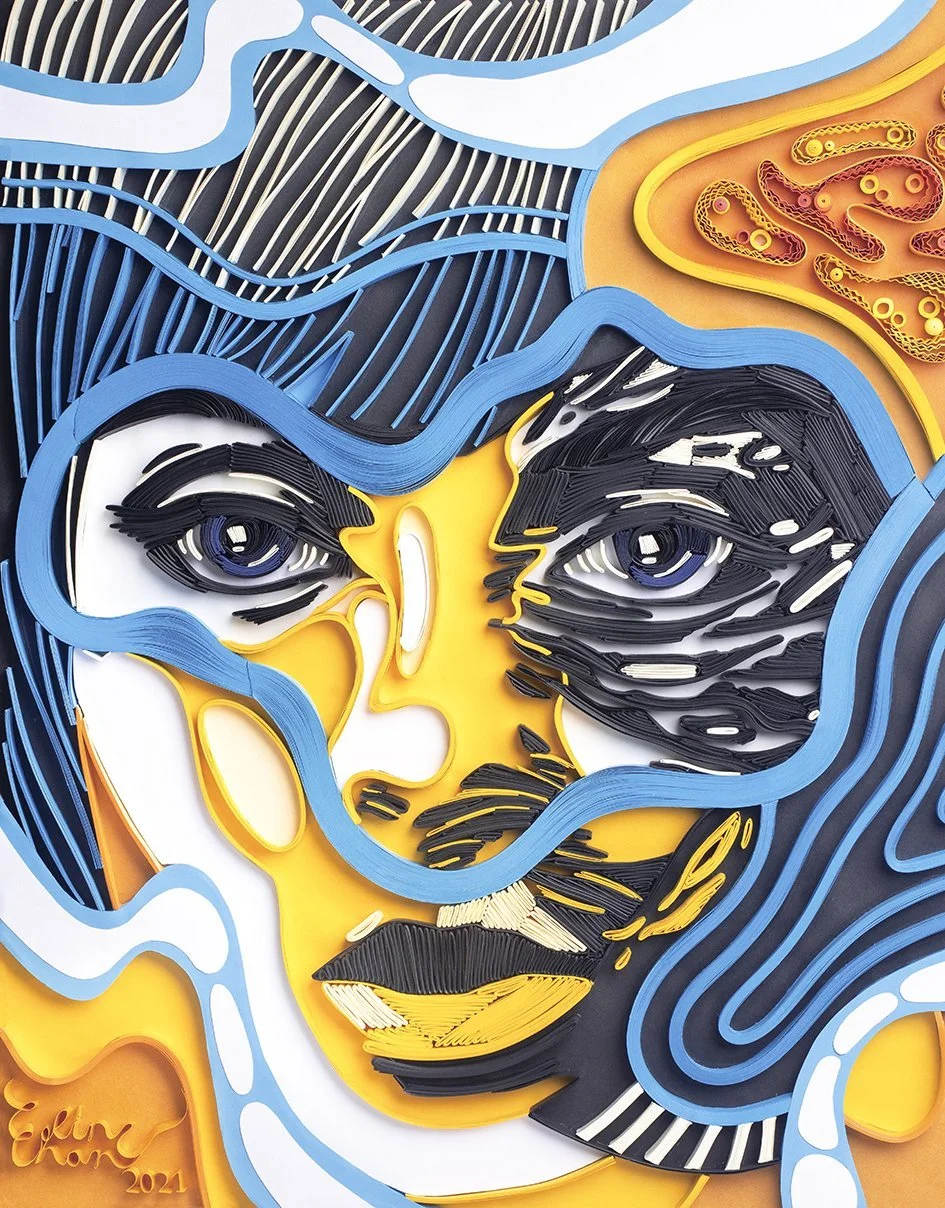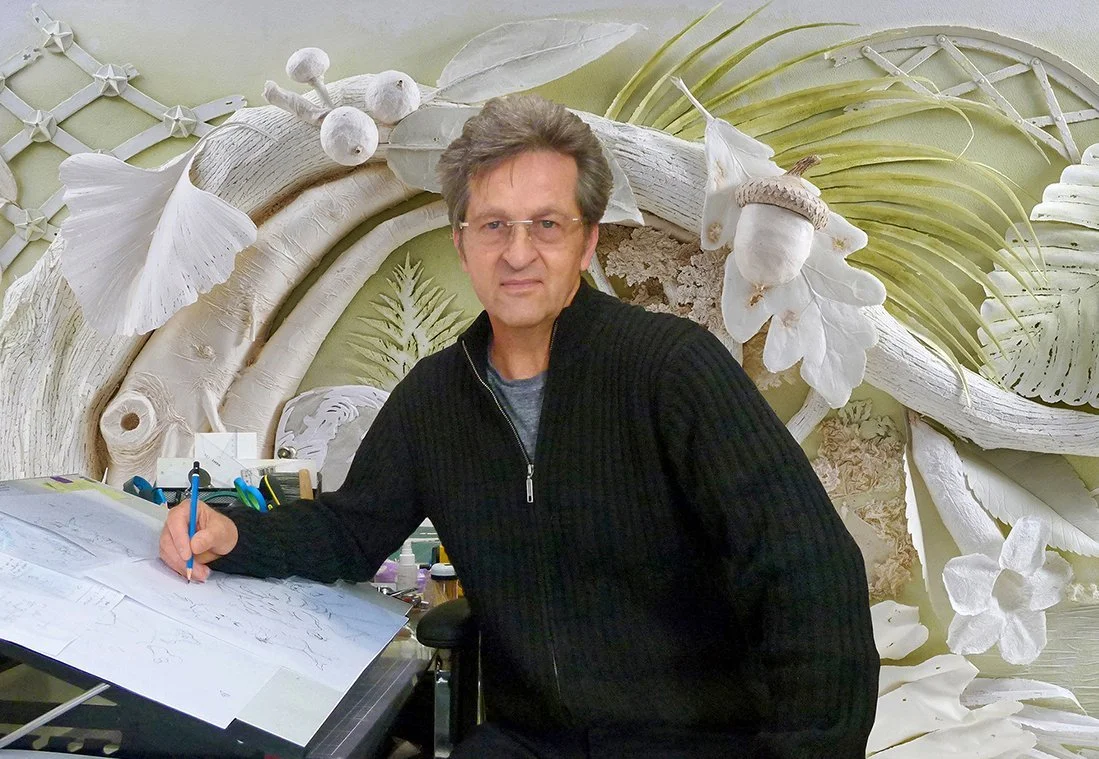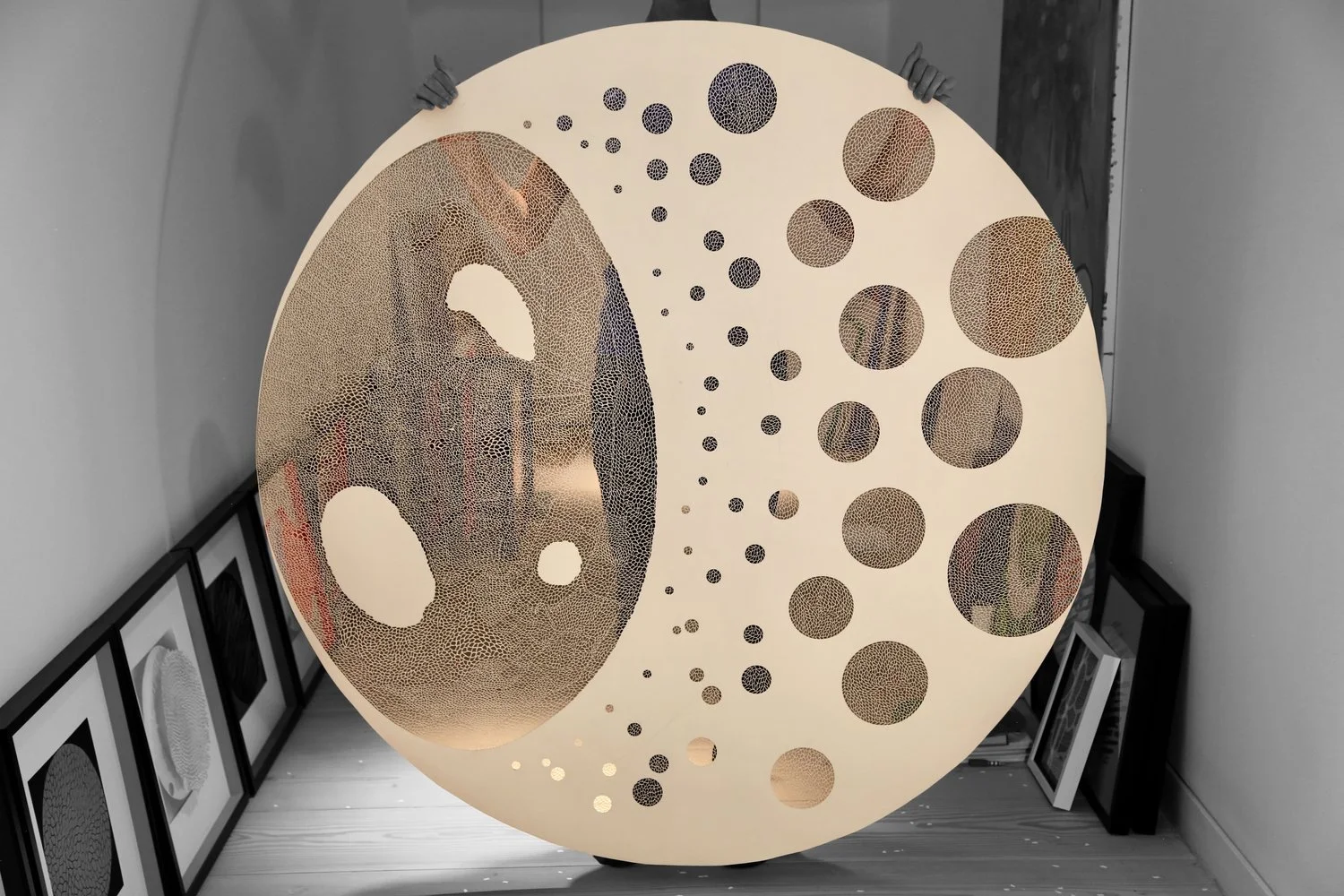10 Questions with Tanja Major
The handmade mushroom paper works from Tanja Major show new possibilities of paper making, they are made of almost 100% mushrooms and are therefore a "compostable or sustainable art" that can be returned to nature or the forest.
Since 2020, the fascination of mushrooms has led her to work artistically with their substance and the pigments extracted from them. Tanja Major uses various handmade paper techniques, some of which consist of ancient traditional manufacturing processes, such as the Japanese Washi technique. These are made by me with my experience, ideas and new design possibilities from natural products.
Mushrooms, including porcini, tramets, leaf fungi, and more, some edible and some inedible, are the essential and primary substance in Tanja's creative process. Their color expands the expressive power and accentuates what is meant. Material, color, and composition reflect experiences and sensations. The mushrooms are in a dormant phase and can be revived and blossom at any time. They provide her with a natural material that is very alive and inspiring. This creates unusual structures and haptics, sometimes rough, creamy, padded, and stable, but also brittle or parchment-like.
They enter into connections in the making, testifying to the transience of living forms: one moment inhabited, valuable, clear, and then suddenly changing, disintegrating—a way into the unknown, where we can catch a glimpse of the strange.
Tanja Major - Portrait
Through her pioneering work, Tanja Major explores, as a paper artist, the innovative transformation of mushrooms into paper fibers. It's about the fragility of nature, the fragility of life. Her interest lies in a comprehensive understanding of life cycles, where emergence and decay are interwoven, discovering various organisms and natural processes with a holistic perspective, where humans are just a part. The research focuses on natural substances and artistic processes that serve as the basis for paper production. The acquired mycological knowledge and nature insights result from ideas and have found their way into artistic implementation. Working with mushrooms can be seen as a symbiotic cooperation between humans and nature. What is commonly referred to as a mushroom is the reproductive organ (fruiting body) of a larger living organism, the mycelium. The mycelium consists of fine threads (hyphae), long cell strands that can grow in the soil or within dead, nutrient-rich organisms and are often invisible to the naked eye.
NATURE is our life.
This time of alienation, both from our fellow humans and from nature, the Anthropocene, influenced by factors like human activities and selfish behavior, has a lasting impact on climate, ecosystems, and society. We face significant challenges, such as the extinction of entire species, loss of biodiversity, and depletion of natural resources. In this complex situation, it is clear: The future does not lie in building barriers but in coming together, understanding our relationship with nature and its diverse actors, deciphering their interconnected functioning, and restoring our connection to the whole. Fascinating beings like mushrooms can be discovered in nature, possibly pointing to new paths for the future. They can provide fertile ground, possess healing powers, serve as food, and restore what has been destroyed. Your life has been shaped by photography. Visual perception allows us to perceive the world with many available senses.
Photography means seeing and representing, sharpening the view, and opening access to nature. Since 1997, Tanja Major has been working artistically as a freelance food writer, cookbook author, and photographer under MAJOR FOOD & PHOTO. She was able to acquire her culinary expertise in fine dining. With her early passion for photography, and perhaps a seventh sense for optimal lighting, she arranges compositions with natural products. The portfolio also includes six award-winning photo books. This is how her interest in mycology – the world of mushrooms – arose. For several years, Major has been intensively involved with mushrooms. The MYCO-logical groups she is part of volunteers to map and identify mushrooms for the protection of nature and conservation areas. With their seemingly endless diversity, the world of mushrooms is an inspiration for the artist in many different directions. Now, she works as a paper artist and mushroom paper designer.
Ustilago, 100x140 cm, 2023 © Tanja Major
INTERVIEW
Your work is quite peculiar. What inspired you to start making paper from mushrooms?
For several years, I have been deeply involved with mushrooms. The MYCO-logical groups I am part of volunteer to map and identify mushrooms for the protection of nature and conservation areas. The endless diversity of the fungal world has inspired me in many ways and led to numerous further education opportunities in the field of mycology. The discovery of papermaking from fungus was sparked during my Mushroom Coach training. The combination of my passion for art and mycology inspired me to creatively explore mushroom substances and dyes, ultimately leading to my project "Mykobütten."
Can you explain the process of creating paper using mushrooms?
First of all, I would like to explain the term "fungus," which is the reproductive organ of a larger living organism, the mycelium. The mycelium consists of fine threads (hyphae), long strands of cells that can grow in the soil or in nutrient-rich organisms, for example, and are often invisible to the naked eye. Fungal-based paper is characterized by chitin, a fibrous structure consisting of amino polysaccharide polymers that form the cell walls of fungi. Fungi, such as polypores, trametes, and gill fungi, are the most important components in my creative process. Their dyes expand the expressive power and accentuate what is meant. Material, color, and composition reflect my experiences and emotions.
Agaricus, 50 cm, 2023 © Tanja Major
What traditional techniques, like the Japanese Washi method, do you incorporate into your work?
Paper production with plant fibers requires many complex steps that consume a lot of water and energy. The plant material has to be peeled, soaked, boiled, bleached, rinsed, beaten, etc. Polyester or other fibers are often added for stability. These can then constitute hazardous waste when recycled.
Papermaking with fungus eliminates many of these steps, as the mushrooms can be shredded immediately without being cooked or beaten. My research focuses on natural mushroom substances and artistic processes as the basis for the production of my papers. Similar to the traditional papermaking method, my papers are either handmade with a paper scooping frame or cast.
These are made from natural products using my experience, ideas, and new design possibilities.
How do the colors and textures of different mushrooms influence your paper designs?
Certain types of mushrooms are used to dye fabrics such as silk and wool. I also use these mushrooms to dye my mushroom papers.
Each type of mushroom has its own texture and feel, which allows me to create different structures, sometimes rough, creamy, wadded, and stable, but also brittle or parchment-like. To achieve a parchment-like texture, I have developed a new manufacturing process.
How does your work reflect the transient nature of life, as you mention in your statement?
My handmade papers from mushrooms show new possibilities in papermaking and are made almost 100% from mushrooms, which makes them a "compostable or sustainable art." As the papers decompose, they can be eaten by other species of fungi and microorganisms or animals. I am interested in understanding the cycles of life in which creation and decay are interwoven.
To discover different living beings and natural processes with a holistic view in which humans are (only) apart.
They enter into connections in the process of creation that bear witness to the transience of living forms: inhabited, valuable, clear for a moment, and then suddenly changing, disintegrating. A path into the unknown, where we can catch a glimpse of the strange.
Major Setae, 2023 © Tanja Major
Universe, 60x80 cm, 2023 © Tanja Major
What do you find most fascinating about mushrooms?
They are always present in the air, in water, within us, everywhere!
How has your background in photography and fine dining influenced your current work?
As a child, I always enjoyed being in nature. Later, through cooking and photography, my visual perception was sharpened to perceive the world with all senses. Photography is about seeing and representing, opening access to nature. Six of my photo books have been awarded with gold and silver medals.
Can you describe the symbiotic relationship between humans and nature that your art promotes?
For billions of years, complex processes in nature have optimized teamwork, multi-path strategies and balance. Symbiosis, as the coexistence of different organisms, offers advantages for partners. Symbioses can be found at all levels of life, from microbes to humans, within and between species. The future lies in coming together, understanding our relationship with nature and restoring our sense of belonging to the whole.
95% of all plants live in symbiosis with fungi - these influence flavor, vitality and yield, and therefore our lives. Fascinating creatures such as fungi can point new paths into the future, provide fertile soil, possess healing powers, serve as food and restore what has been destroyed.
Symbiotic, 2023 © Tanja Major
Utopia, 2022 © Tanja Major
What challenges have you faced in creating mushroom paper, and how have you overcome them?
In a time of alienation from fellow human beings and nature, the Anthropocene is having a lasting impact on the climate, ecosystems, and society. We are facing challenges such as the extinction of entire species, the loss of biodiversity, and the depletion of natural resources. Fungi are also changing their cycles, locations, and perhaps even their development in the face of climate change. In this complex situation, we realize that the future does not lie in erecting barriers but in coming together, understanding our relationship with nature and its diverse actors, deciphering its interconnected functioning, and restoring our sense of belonging to the whole.
What are your future goals or projects as a paper artist and mushroom paper designer?
As a paper artist and designer of mushroom paper, my future goals and projects are focused on optimizing the paper and demonstrating different application possibilities. I am faced with the challenge of designing and presenting larger objects as I come up against spatial limitations, which require change. Together, we should look to the future to develop innovative ideas for a resource-conserving and peaceful future that is in line with the spirit of the times. We can learn from nature and use it as a model. Particularly in view of the diversity of cultures and the challenges of nature, it is important that we actively work on shaping our future. My Mushroom papers can be creative, artistic, speculative, and innovative, showing new ways in which we can explore and move into the future.
Artist’s Talk
Al-Tiba9 Interviews is a promotional platform for artists to articulate their vision and engage them with our diverse readership through a published art dialogue. The artists are interviewed by Mohamed Benhadj, the founder & curator of Al-Tiba9, to highlight their artistic careers and introduce them to the international contemporary art scene across our vast network of museums, galleries, art professionals, art dealers, collectors, and art lovers across the globe.

















